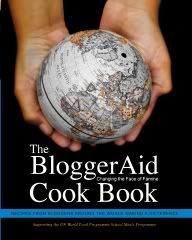After writing about so many tragedies and so much sorrow regarding migrants in the Mediterranean, it is nice to be able to bring you a positive story on this theme: When I read about the Barca di Cioccolato ["Chocolate Boat"] project, I contacted Pierpaolo Ruta of the Antica Dolceria Bonajuto, Modica, who in turn, put me in touch with the project's creator, the artist Jonida Xherri.
Jonida is from Albania and is currently living in Modica and Florence. Jonida, too, had dreamed of coming to Italy so felt that she could identify with the migrants and, having received a Modican welcome herself as an immigrant seven years ago, she wanted migrants at the Pozzallo Reception Centre to have a similar experience. Thus, in January this year she launched the first Barca di Cioccolato project and, at the end of August, the second.
Jonida wanted to demonstrate not only the economic links that we have with Africa, but also the important cultural ones and the ways in which our traditions are connected. The project was carried out in three phases:
1. The historical phase: It was the Spanish colonisers who brought the Aztec method of making chocolate to Sicily but the cocoa bean of course had to come from Africa. At first, it arrived by sea, just as migrants in search of a better life do today, even risking that life to do so. For this reason, it was decided to make the second "chocolate boat" out of 'mpanatigghi [the word has variant spellings] the traditional Modican pastries containing chocolate and minced beef which, in times gone by, were carried on long journeys, because they would keep. In all, 600 'mpanatigghi were made by the migrants with the help of the staff at Bonajuto. The public were able to see the finished boat from 29th August - 1st September and when it was dismantled the 'mpanatigghi were distributed to the migrants in the reception centre.
2. Ceramic tiles: The migrants painted their own designs or wishes on to the tiles, often using African colours or chocolate themes. Then the tiles were fired and displayed in the reception centre.
3. Video: the viewing of a video about the first Barca di Cioccolato project, with the aim of showing people that even the poorest countries have a rich cultural heritage and can contribute to the world economically.
After making the boat, the migrants were offered lunch at the Osteria dei Sapori Perduti and ice cream at the Caffè Adamo, both in Modica. They visited the Salvatore Quasimodo exhibition at Modica's Palazzo della Cultura and the town's Garibaldi Theatre.
Jonida writes.
"The young migrants want to use art to express their dreams. These dreams have led them to undertake a very difficult journey and to risk their lives. They want to say that they are here and that they need the help of the whole of Europe to have a normal working life."
Slideshow - Barca di Cioccolato 2
Jonida did not receive any public funding for the project and wishes to thank the following private sponsors:
Antica Dolceria Bonajuto, Franco Ruta e Pierpaolo Ruta
Girolamo Pavingross Srl Carpentieri
Giovanni Modica Scala (fotografo)
Thank you, Jonida, for the information and photos.
All photos are the work of Giovanni Modica Scala.
Giovanni Modica Scala on flickr































3 comments:
What a beautiful, thoughtful project! We can all learn how to show sympathy and understanding in this way. Thanks so much for sharing this with us, Pat.
A very interesting post...thanks, Pat. :)
Thank you , Rosaria and Lee.
Post a Comment